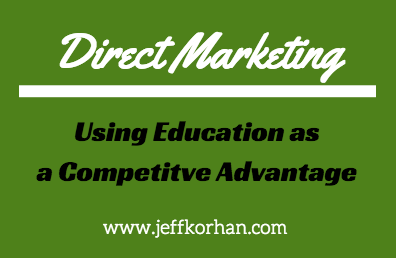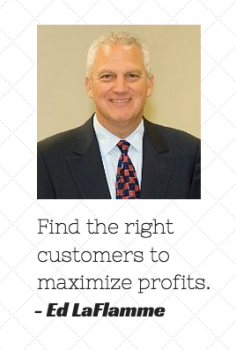Podcast: Play in new window | Download
Subscribe: RSS

This is Episode 42 of This Old New Business weekly business podcast with Jeff Korhan.
Ed LaFlamme used educational direct marketing in the days before digital to propel his former landscape business into a multi-million dollar enterprise that he later sold to a national firm. In fact, his marketing newsletters were so successful they were featured by Inc Magazine as among The Best Newsletters in America.
In this episode we discuss how LaFlamme used education as a competitive advantage in his business by seeking out and learning from experts — to then become one.
Our Featured Guest: Ed LaFlamme
 Ed LaFlamme is the author of the nationally acclaimed book, Green Side Up: Straight Talk on Growing and Operating a Profitable Landscaping Business. He was formerly the founder of the largest landscape maintenance company in the state of Connecticut, which he later sold to Landcare USA. Today Ed is a professional speaker and partner in The Harvest Group, where he mentors aspiring landscape businesses nationwide.
Ed LaFlamme is the author of the nationally acclaimed book, Green Side Up: Straight Talk on Growing and Operating a Profitable Landscaping Business. He was formerly the founder of the largest landscape maintenance company in the state of Connecticut, which he later sold to Landcare USA. Today Ed is a professional speaker and partner in The Harvest Group, where he mentors aspiring landscape businesses nationwide.
Learn from Experts to Then Become One
Ed learned early in his career that education and expertise are transferrable. To differentiate his the snow plowing segment of his landscape business he sought out meteorology (weather) experts and shared that expertise with his newsletter subscribers.
Over time, LaFlamme’s clients viewed his company as the winter (and summer) weather prediction experts. In addition to building trust customers and potential buyers, specific expertise suggests professionalism that extends into other aspects of the business, including the products and services being offered.
In competitive markets where products and services are viewed as predominantly the same, the differentiators are people and relationships. One of the surest ways to open doors to new relationships is with specialized expertise in the form of educational content that adds value to physical products and services.
To keep pace today, business owners are investing in education for themselves and their team. The savvier small businesses are also building their list of subscribers to then employ direct marketing methods to share their acquired expertise, a practice often known as content marketing: educating people to help them become better buyers, and the right customers.
I’d love to hear your thoughts on direct marketing and online education? Meet me over on Twitter to take the conversation further.
Lighting Round Tips and Advice
Ed’s Top Sales or Marketing Advice – Study the issue at hand. Really get involved to have a thorough understanding for developing a solution.
His Favorite Productivity Tip – Make a list of what needs to be done and prioritize according to what’s urgent, important and long-term. Then choose the one that is most important to get done that day.
A Quote that has Inspired Ed’s Success – “Pounce on every day.” Jack Welch
Key Take-Aways
- Learn more about Ed and his products and services, including The Harvest Way Academy at The Harvest Group Business Consulting.
- You can contact Ed LaFlamme at [email protected]
- Ed referenced The Millionaire Messenger by Brendon Burchard and Built-In Social.
- Other green industry podcast episodes: Running a business that is relationship-focused with Marty Grunder and owning a predictable business-niche with Mike Rorie.
How to subscribe to This Old New Business podcast
Click here to subscribe via iTunes.
You can also subscribe via Stitcher.
Help us Spread the Word
If you enjoyed this episode of This Old New Marketing podcast, please head over to iTunes or Stitcher to leave a rating, write a review, or subscribe.
About the Author: Jeff Korhan, MBA, is the author of Built-In Social: Essential Social Marketing Practices for Every Small Business and host of This Old New Business podcast.
He helps mainstream businesses adapt their traditional growth practices to a digital world. Connect with Jeff on LinkedIn, Twitter, Facebook, and Google+


